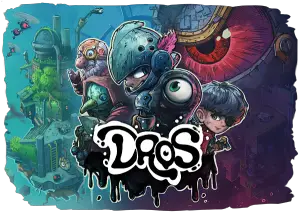JavaScript has become ubiquitous in our digital, interconnected world. This simple and easy-to-use language is so popular that over 95% of all websites use it. And it’s not hard to see why. It makes web pages more interactive and engaging. Animations and scaling, for example, are possible because of JavaScript. So if you haven’t enabled it in your browsers, you’re missing out. But don’t worry, learning how to enable JavaScript is easy.
Many of us, programmers and non-programmers alike, want to do more than enable JavaScript — we want to learn how to use it! After all, doing so can help you build dynamic, speedy websites. From taking JavaScript bootcamps to following online tutorials to bothering your friend who’s a coder, the number of resources at our disposal are not lacking. There is, however, one resource that we just can’t get enough of — time. If you’re interested in learning JavaScript, you’re probably wondering how long this endeavor could take.
Table of Contents
Becoming Proficient in JavaScript
Most experts seem to agree that learning JavaScript can take anywhere from six to nine months. But this doesn’t mean you can’t get a website up sooner. In fact, by following any of the various tutorials that are available online, you can get a simple website up in a matter of hours.
Learning and becoming comfortable with the basics of the language could take several weeks to a month. Becoming proficient in JavaScript and learning to think like a developer, that’s what takes time. But once you achieve this, as they say, the world will become your oyster.
Benefits of Learning JavaScript
Fortunately, JavaScript is one of the easier programming languages for complete beginners to learn. Once you get a handle on it, learning other programming languages will be a cinch because the underlying concepts and logic of most programming languages are very similar.
While learning JavaScript, you will also get exposed to HTML and CSS. These technologies are instrumental in building web pages, as they provide the structure and visual layout for what users see. They are static languages, so they’re even simpler to learn than JavaScript.
Once you’ve mastered JavaScript, you can also begin to use libraries and frameworks that are built on top of it. Popular examples include jQuery and React.
What Makes JavaScript So Special?
Well, for starters, it is, effectively, the only client-side language. That is, it is the only programming language that all the popular browsers can understand and interpret. Running code on your browser rather than on servers allows for more flexibility and, of course, speed!
Another impressive feature is its asynchronous quality. For other programming languages, you cannot move on to a new task until the previous task is completed. However, with asynchronous languages, you can move on to new tasks and finish the old ones later.
Finally, because of its massive popularity, there is a very active community surrounding JavaScript. This means you can find answers to most of your questions about the language online.
Final Thoughts
So how does one go about learning JavaScript and web development? There are several options. The simplest and most cost-effective route is to teach yourself through free or low-cost online tutorials. While this is a great starting point, it can be difficult if you get stuck and have no one to help you.
If teaching yourself seems too daunting or challenging, you could always participate in a coding bootcamp, where the average cost ranges from $10,000 – $15,000. While this option costs more money, you will have well-informed instructors at your disposal. Lastly, if you’re interested in a deep dive into the world of software development, and if you have the time and money to commit to it, pursuing a degree in computer science may be for you.
Well, now that you know what to expect, what are you waiting for? Get out there and build that fancy website of yours!




Leave a Reply